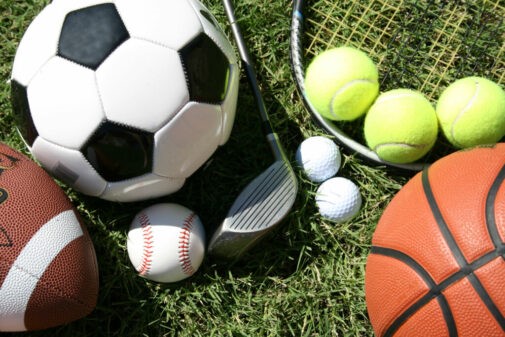Injuries Common in Athletes, but Preventable
 Overuse injuries have become more common in young athletes as pressures and expectations to perform outweigh the emphasis of simply playing. Although overuse injuries can occur at any age, the peak age is seen during growth spurts, when bones are growing quickly, resulting in tight muscles, new body proportions and unfamiliar mechanics.
Overuse injuries have become more common in young athletes as pressures and expectations to perform outweigh the emphasis of simply playing. Although overuse injuries can occur at any age, the peak age is seen during growth spurts, when bones are growing quickly, resulting in tight muscles, new body proportions and unfamiliar mechanics.
Overuse injuries are preventable and result from doing more than what the body can support. They usually occur from increasing activity too quickly, inappropriate loads during training, improper mechanics, and/or failure to allow the body to recover.
A few of the overuse injuries frequently seen in my practice include:
- Medial tibial stress syndrome/stress fractures: More commonly seen in runners, and soccer and basketball players.
- Little League Elbow/Shoulder: Commonly seen in overhead activities like baseball and softball, but other shoulder/elbow overuse injuries can also be seen in swimming, volleyball and tennis.
- Spondylolysis: Although lower back pain can be seen in any athlete, stress fractures of the lumbar spine are more commonly seen in sports with recurrent hyperextension in the back such as football lineman, gymnasts, swimmers and weightlifters.
Stress injuries range from straightforward to complicated. Although stress fractures are a classic example of an overuse injury, not all overuse injuries are as severe.
Many athletes attempt to play through their injuries, relying on the adage of “no pain, no gain,” but they may not have enough experience in their sport to recognize when to back off, when pain is not just fatigue or that they have a voice in working with coaches, trainers or parents. If an overuse injury is not recognized and treated properly, improper mechanics often follow shortly after to protect/compensate for the injury. This can lead to more extensive or multiple injuries.
Sustaining an overuse injury does not need to be the end of a season. Early on, these injuries can be signs that if addressed early, they can direct athletes to areas of weakness or imbalance. Addressing the imbalance early on can actually result in a stronger, more efficient and agile, less injury-prone player. If they are not recognized or ignored, the athlete is often forced to eventually stop playing, can only play at submaximal potential or is unable to return to the sport entirely. Other children may return too quickly only to be re-injured.
To prevent overuse injuries:
- Set limits: As a general rule of thumb, the total hours a child should practice their sport each week is equal to their age. For example, an 11-year-old should play/practice their sport no more than 11 hours/week.
- Recover: At least one day each week should be free of practice or games. This includes home “practice.” No “quick, three-mile run” or “throwing a few pitches” in the backyard. The body needs time to repair and allow muscles to recover. Proper recovery allows muscles to strengthen and adapt to take on heavier loads.
- Take an off-season: Even professional athletes take time off after their season is finished. There is a reason for this. Sports training/seasons build gradually in intensity to a peak at the end for playoffs, championships or competitions.
- Avoid early specialization: One of the best things an athlete can do to prevent an overuse injury is to diversify their activities. This decreases the risk of overuse injuries, as movement patterns usually vary between sports. This also allows young athletes an opportunity to sample a variety of activities, learn new skills, meet more kids and prevent burn-out.
- Fuel: Growing bodies need sufficient calories. A growing athletic body needs even more. This includes all macronutrients, including carbohydrates. In fact, carbohydrates are most important during exercise and in replenishing energy stores post-workout. Fats act as energy stores for longer bouts of exercise. Proteins help muscles recover. They all play a part in keeping an athlete healthy. Limiting macronutrients can greatly affect an athlete’s ability to perform.
Article contributed by: Dr. Sarah Pierotti
Tags: #commonsportsinjuries, #health, #parishnurse, #sportsinjuries

Comments are closed here.